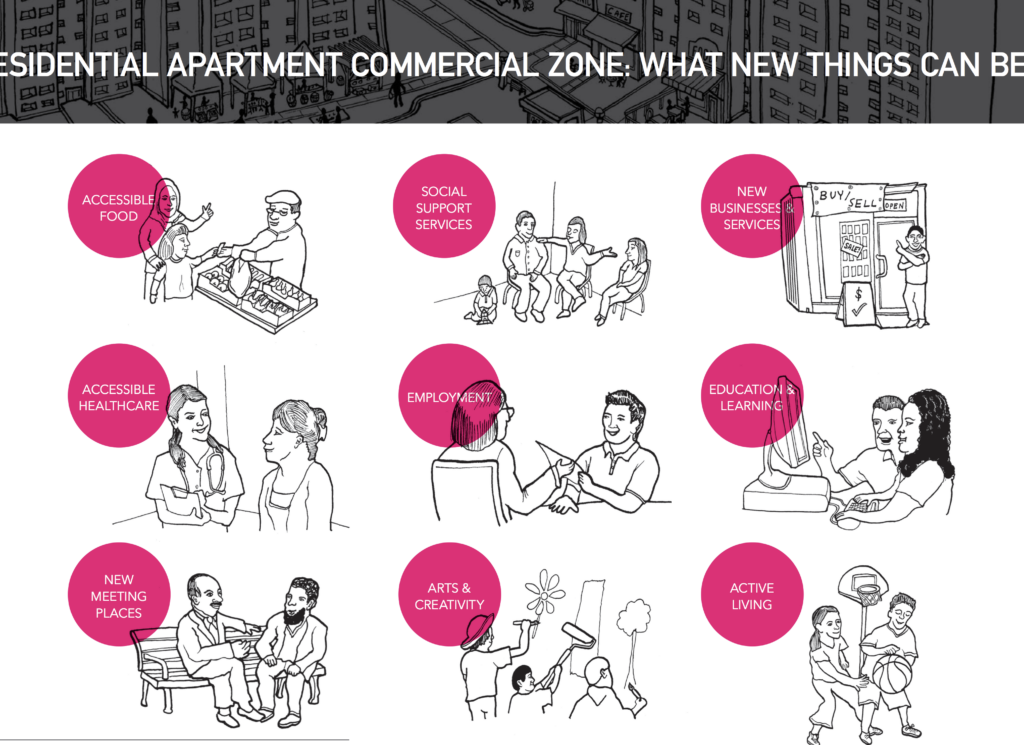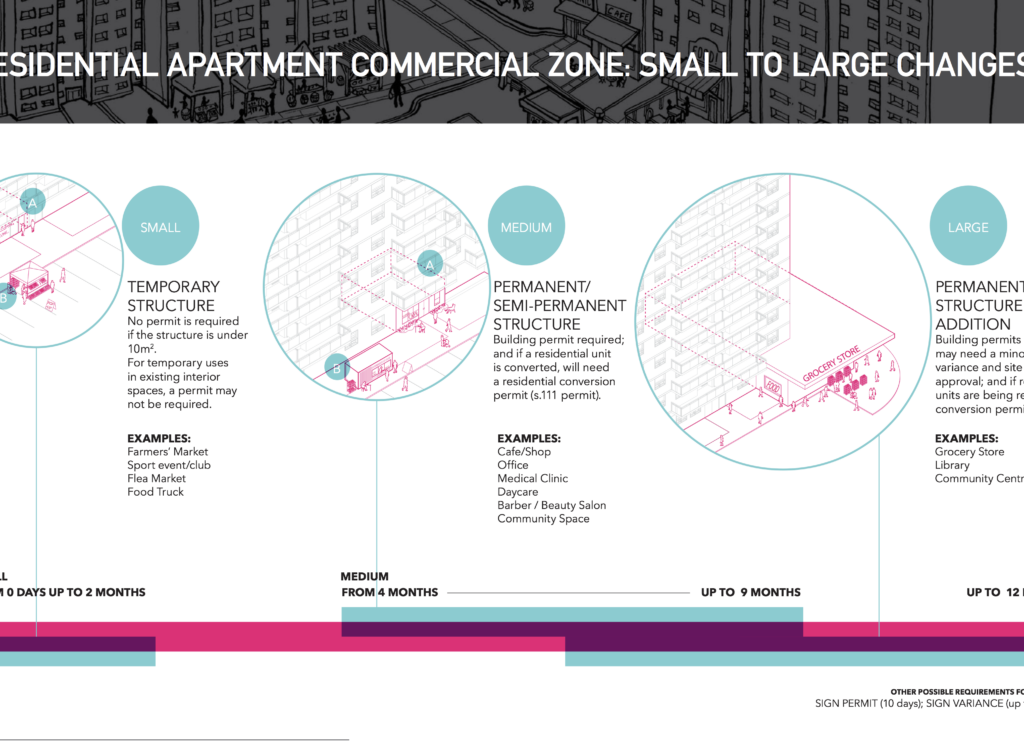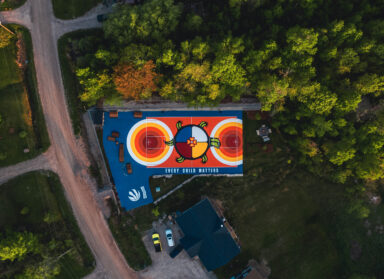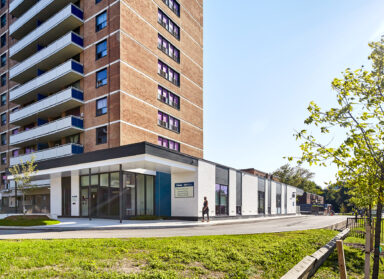The RAC Zone
The RAC Zone
En Français >Following a process of nearly two years of research, public consultation, policy development, and advocacy in partnership with ERA Architects, the Centre for Urban Growth and Renewal, United Way Toronto & York Region, Toronto Public Health and the City of Toronto, the Residential Apartment Commercial (RAC) zone was approved by Toronto City Council by-law in 2013 and the Ontario Municipal Board approved the new zone in 2016.
Residential Apartment Commercial (RAC) zoning allows small-scale non-residential uses, such as food markets, shops, small business, classes, community facilities and other initiatives, on nearly 500 apartment building sites that were previously residential-only.
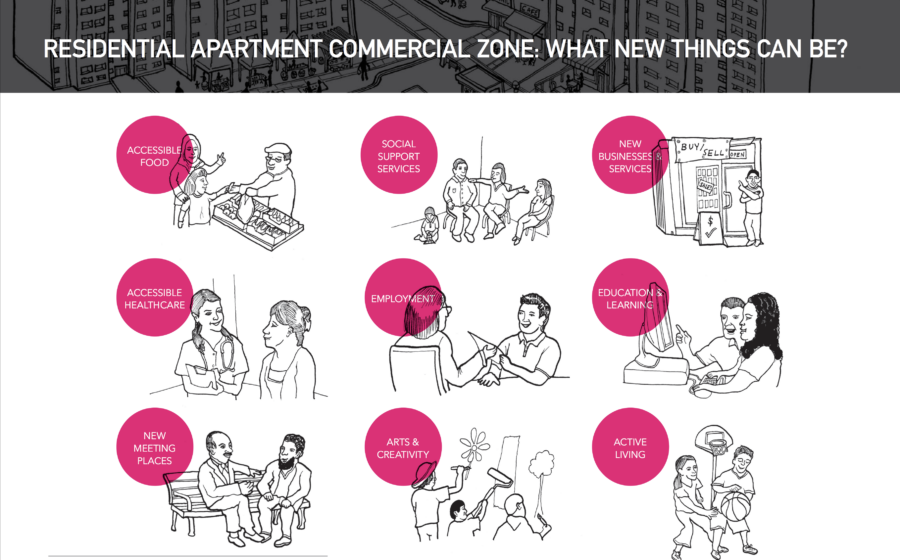
The new zoning by-law provides a new and flexible land-use framework for Apartment Neighbourhoods. The goal of this new framework is to enable healthy, complete, and vibrant neighbourhoods better able to respond to local needs and opportunities. The goal is addressed primarily by allowing for a full range of uses within these neighbourhoods: commercial activity, social activity, and community services – amenities that most areas of Toronto take for granted.
Surprisingly, these uses within Apartment districts have until now been largely prohibited. This is because the zoning of Apartment areas was conceived in the 1950s when Toronto’s suburbs were thought to function very differently. These areas were planned with a strict separation of uses: Residential, commercial, and institutional uses were all meant to be a convenient drive from one another, but very separate. While this worked for the car-centric suburbs of fifty years ago, it has prohibited the appropriate evolution of these neighbourhoods in response to ever changing local needs, opportunities, and aspirations. So although the communities themselves have evolved, the physical neighbourhoods have largely remained fixed.
Not only inconvenient, this condition has begun to affect health outcomes, because the strict zoning laws have dissuaded local services, fresh food, employment opportunities, childcare amenities, and so on, despite the needs on the ground. The new RAC zone is a big step in shifting this condition and providing the tools required to enable the hundreds of Apartment Neighbourhoods found throughout Toronto’s inner suburbs (and beyond) to emerge as integrated, vibrant, and diverse community hubs.
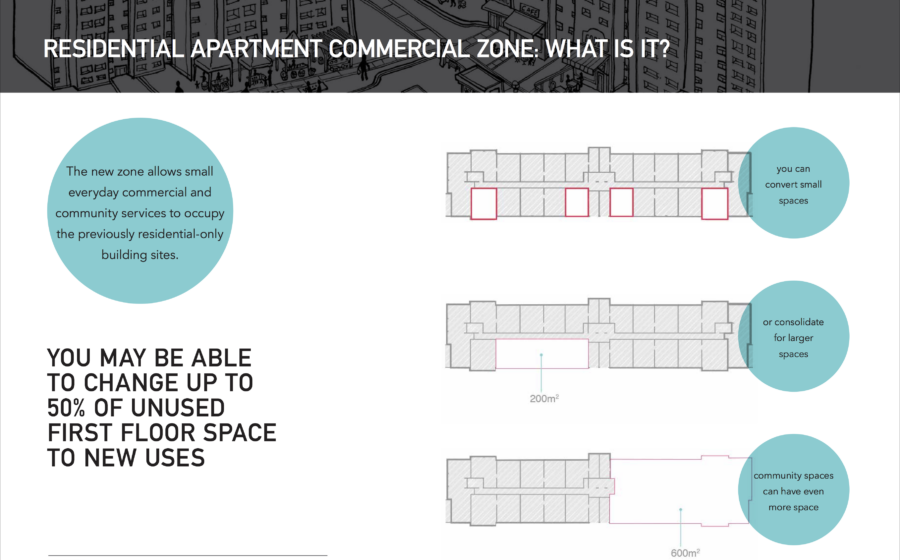
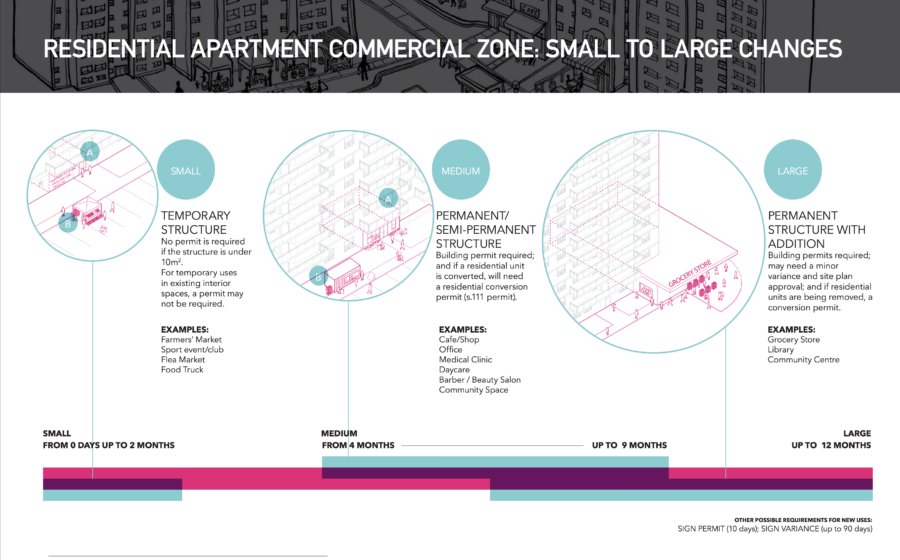
As described by Planning and Growth Management Committee Chair Councillor Peter Milczyn:
“This is a change that 10-15 years from now we will look back and say ‘this transformed Toronto’.”
Yet the zone’s approval is just the start. While the RAC zone removes significant barriers to community social enterprise and positive neighbourhood investment, the next step is for landlords, residents, and communities to bring this potential to life.
A City-wide zoning change of this type is a first for Toronto, and would not have been possible without this diverse group of collaborators and stakeholders working together. It is a testament to what is possible through collaboration, and perhaps the start of new way for social agencies, local communities, architects, and the City to work together towards a brighter Toronto.
To learn more about the RAC zone, visit www.raczone.ca and www.towerrenewal.com
- Location
- Toronto
- Client
- City of Toronto
- Partner
- Centre for Urban Growth and Renewal, United Way Toronto & York Region, Toronto Public Health
- Date
- 2011-2016
- Expertise
- Interpretations, Studies & Strategies/Tower Renewal
- Sector
- Institutional/Multi-Unit Residential
Awards
- Ontario Professional Planners Institute (OPPI): Excellence in Planning—Municipal Statutory Planning Studies, 2017
